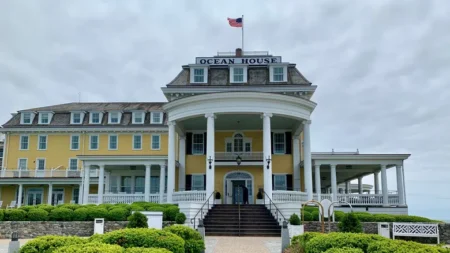Once overlooked by travelers, the German city of Chemnitz is gaining attention as it prepares to serve as the European Capital of Culture 2025. Located in southeastern Germany, Chemnitz has long been overshadowed by its more famous Saxony neighbors, Dresden and Leipzig. But the city is now stepping into the spotlight with fresh energy and a cultural agenda aimed at international visitors.
Chemnitz is Saxony’s third-largest city, home to over 250,000 residents. It has been seen mainly as an industrial hub. The city was severely damaged in World War II, and much of its historic center was lost. After the war, rebuilding followed the typical Soviet-style designs, and the most famous symbol of that era still stands—the giant Karl Marx head monument. Chemnitz was even renamed Karl-Marx-Stadt between 1953 and 1990.
In 2020, Chemnitz and 38 nearby towns across Central Saxony, the Ore Mountains, and the Zwickau region were chosen as the European Capital of Culture for 2025. This honor offers the chance to show the world a new face of the region—one that blends history, culture, and local creativity.
In 2024, Chemnitz hosted about 245,000 tourists, leading to 490,000 overnight stays. By comparison, Dresden welcomed over 2.2 million tourists, and Leipzig 2 million. These numbers show how much potential there is for Chemnitz to grow as a destination.
The city’s campaign slogan, “C the Unseen,” invites visitors to discover hidden cultural gems and untold stories. The goal is to bring attention to the people and places often missed by mainstream tourism. The 2025 program aims to share the city’s spirit of change and innovation.
From now through the end of November 2025, a wide range of events will take place. The program includes festivals, plays, concerts, art shows, sports, food events, and workshops. These activities involve both local people and artists from around the world. Each event is a chance for cultural exchange and learning.
Chemnitz has a long industrial history. The city played a major role in Germany’s textile, rail, and auto industries. It also has roots in mining, especially in the nearby Ore Mountains. This region became a UNESCO World Heritage Site in 2019 for its mining culture and traditions.
Today, the old factories and industrial buildings are getting new life. Many have been turned into museums, galleries, and community spaces. A great example is the Chemnitz Industrial Museum, where visitors can learn about the city’s working-class past. Other converted spaces include the modern art museum, once a 1920s savings bank, and the Schönherr Fabrik, now home to cafes, studios, and shops. Even the city’s youth hostel is in a former factory.
Architecture lovers will enjoy the city center’s large-scale socialist-era buildings. These structures tell the story of how Chemnitz changed through time, while also shaping its modern identity.
Beyond the city, the surrounding areas are filled with charming attractions. Travelers can explore castles from the medieval, renaissance, and baroque periods. The region also offers outdoor adventures like hiking, biking, and water sports. Its natural beauty and clean landscapes attract those seeking peaceful escapes.
Traditional crafts from the region, especially woodwork from the Ore Mountains, are still popular worldwide. These handmade goods carry stories passed down through generations.
Chemnitz may have been ignored by tourists in the past, but that’s changing fast. With a rich blend of industry, culture, and nature, the city is ready to show the world what it has to offer.







